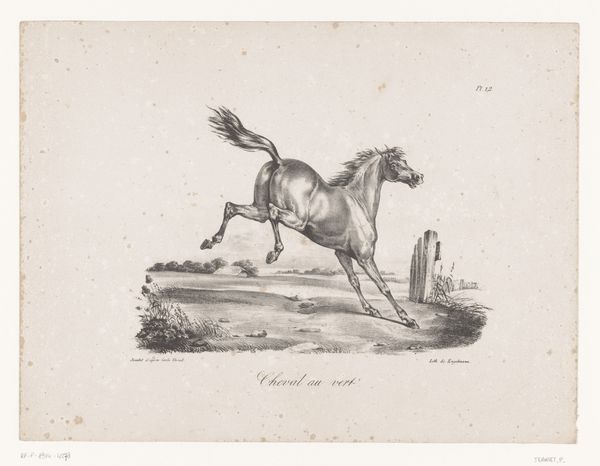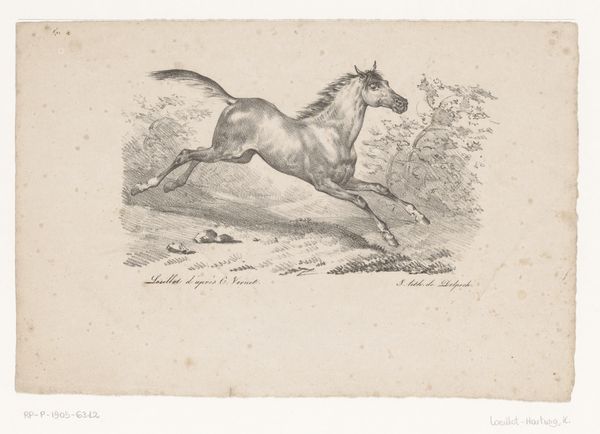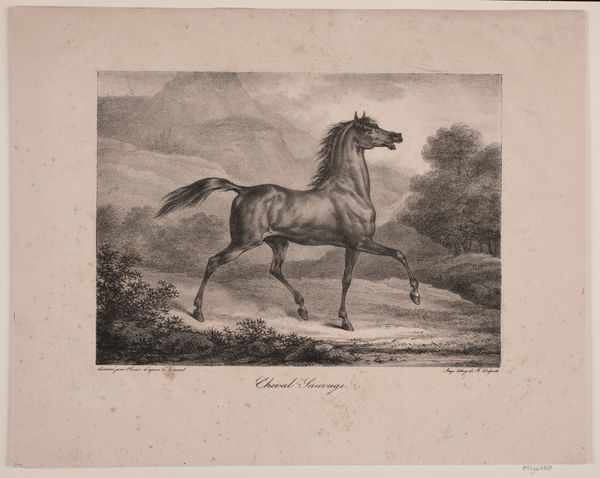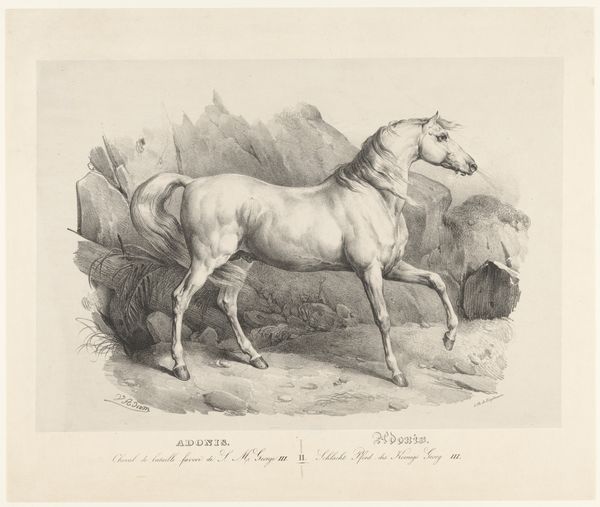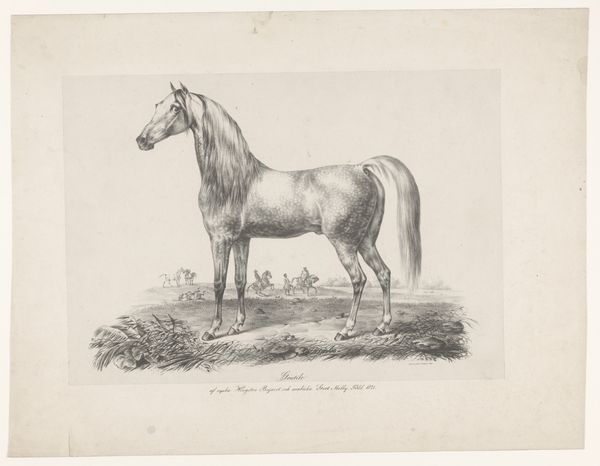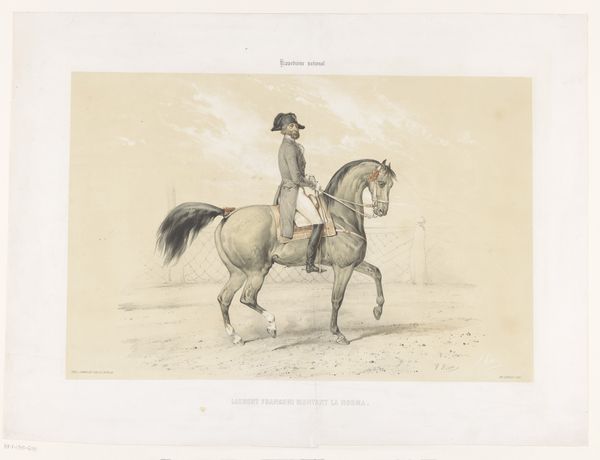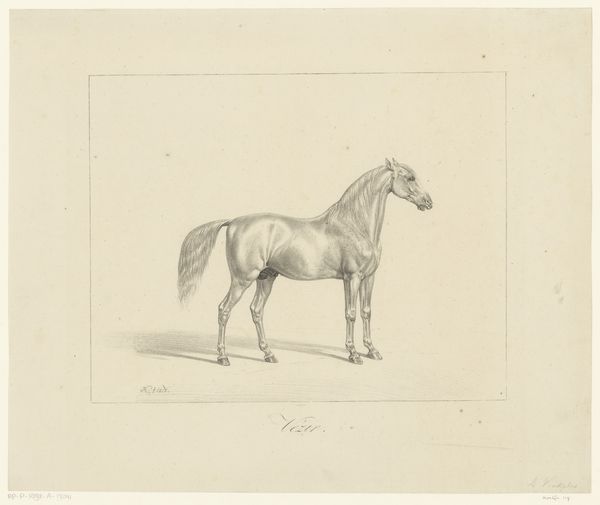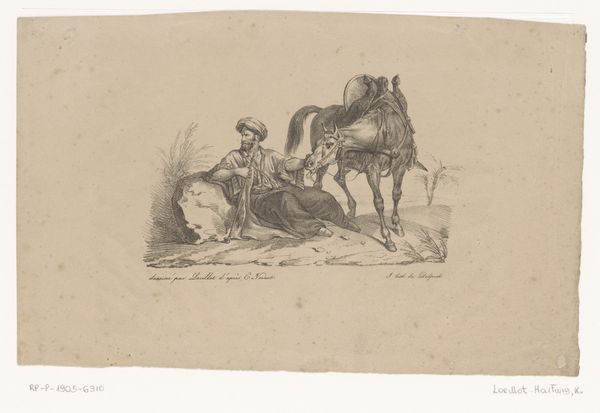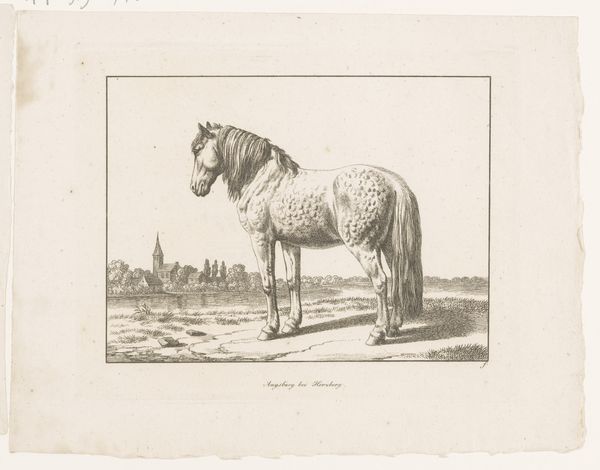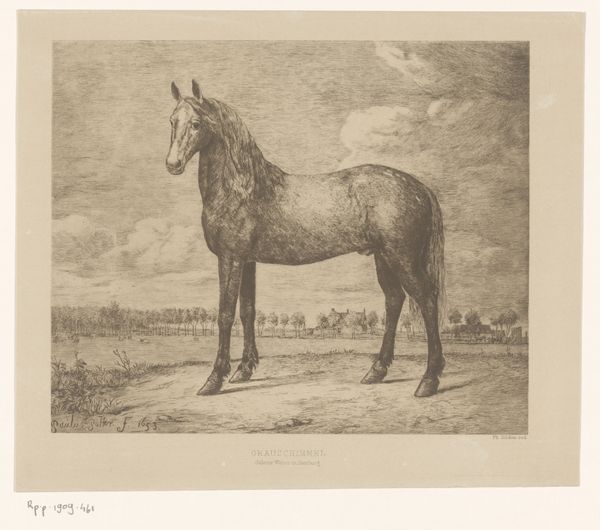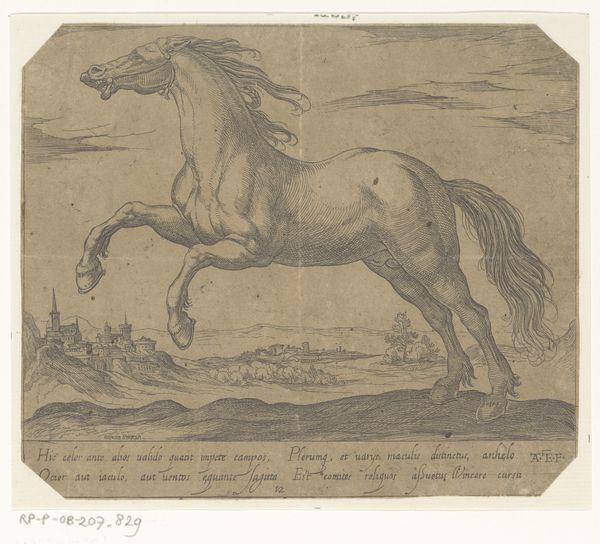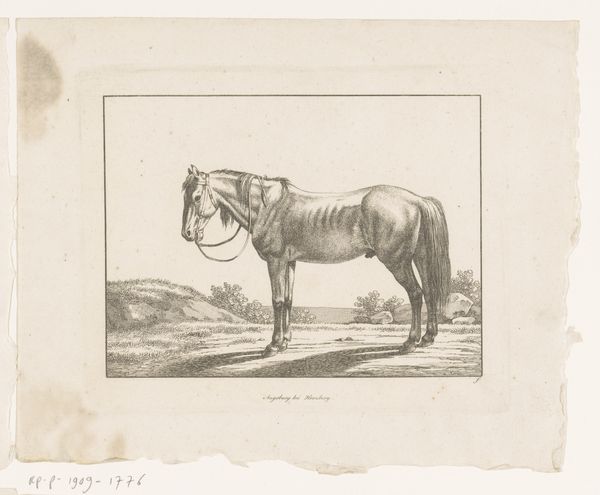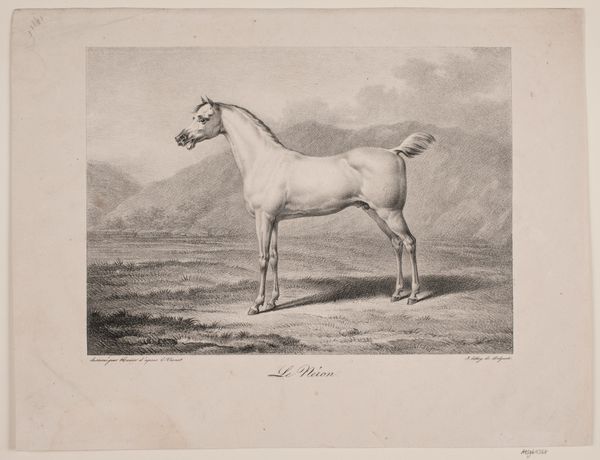
drawing, paper, pencil
#
drawing
#
animal
#
pencil sketch
#
figuration
#
paper
#
romanticism
#
pencil
#
horse
#
line
#
genre-painting
Dimensions: height 166 mm, width 225 mm
Copyright: Rijks Museum: Open Domain
Curator: Before us is "Twee rennende paarden," or "Two Running Horses," a pencil drawing on paper crafted by Gijsbert van Staveren, sometime between 1833 and 1850. What are your first impressions? Editor: The energy is palpable! They seem caught in a wild, almost untamed moment. There's a rawness in the lines that suggests freedom, yet they're harnessed, hinting at constraint. The positioning also introduces questions of perspective and purpose. Curator: Indeed. Van Staveren was working within a Romantic sensibility, where the power and sublimity of nature, even animal nature, were key themes. Equestrian subjects were especially popular, embodying aristocratic pursuits and idealized rural life. This drawing, though, feels less polished than many finished paintings. Editor: That roughness is compelling. Horses are powerful symbols of virility, speed, even war. Their harnessing introduces this societal and institutional control. Seeing the musculature so plainly emphasized brings out primal energies. Is this commentary on animal instinct vs human training? Curator: It's a delicate dance, isn't it? Artists of the period were frequently commissioned by wealthy patrons who prized accurate representations of their steeds. It could be that these drawings represent early drafts or studies rather than finished artworks in and of themselves. How best to present ideals? Editor: I notice the tail and mane movements are particularly emphasized. Such gestures have always been associated with emotive, psychic energies of raw emotional experience. A close look suggests not simply aesthetic embellishment, but coded signals related to this dance you describe. Curator: Perhaps. Though it is interesting to me to view a possible 'rough draft' - if we were to think about social hierarchies and institutional requirements that impact artists now. The ways museums or galleries curate artistic freedom are very powerful constraints - whether physical or psychological. Editor: Absolutely. These fleeting visions can also speak volumes to ongoing cycles – even when they’re rendered as these studies with suggestive possibilities encoded deep below visible, public, conscious levels Curator: Looking at it through that lens enriches our understanding, offering not just a window into the 19th century, but a mirror reflecting the persistent push and pull between wildness and order within our own societies and systems. Editor: Right – reminding me once more of the persistent vitality contained within these archetypal echoes through visual symbolism of both historical record, and their power present in our current cultural moments.
Comments
No comments
Be the first to comment and join the conversation on the ultimate creative platform.
